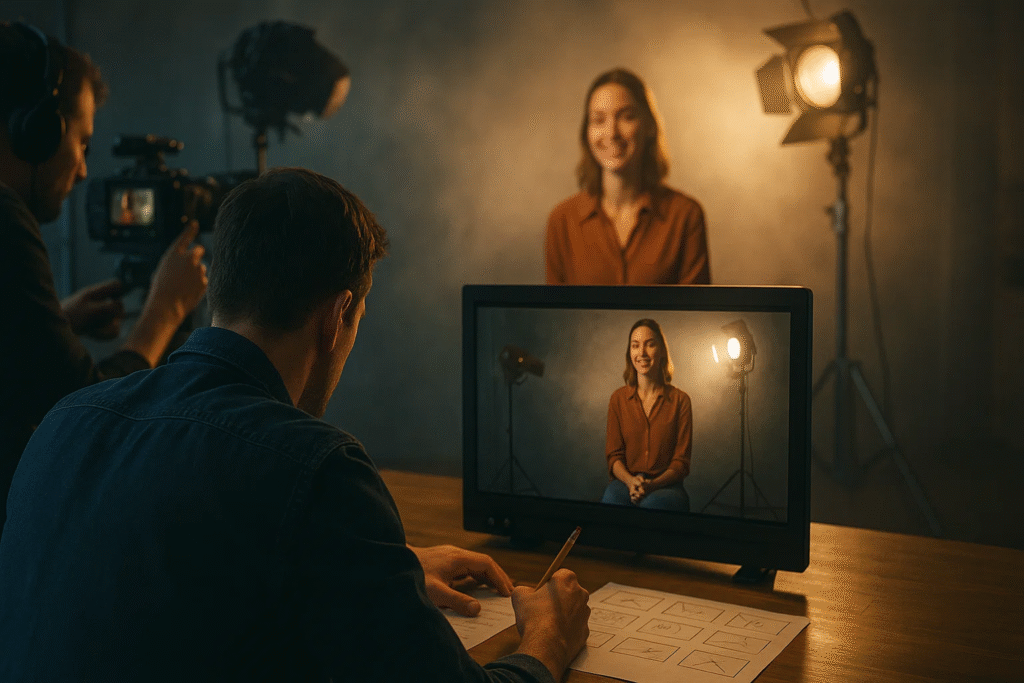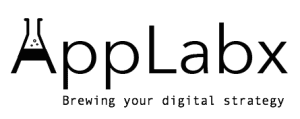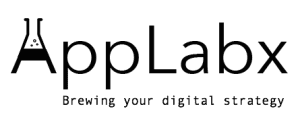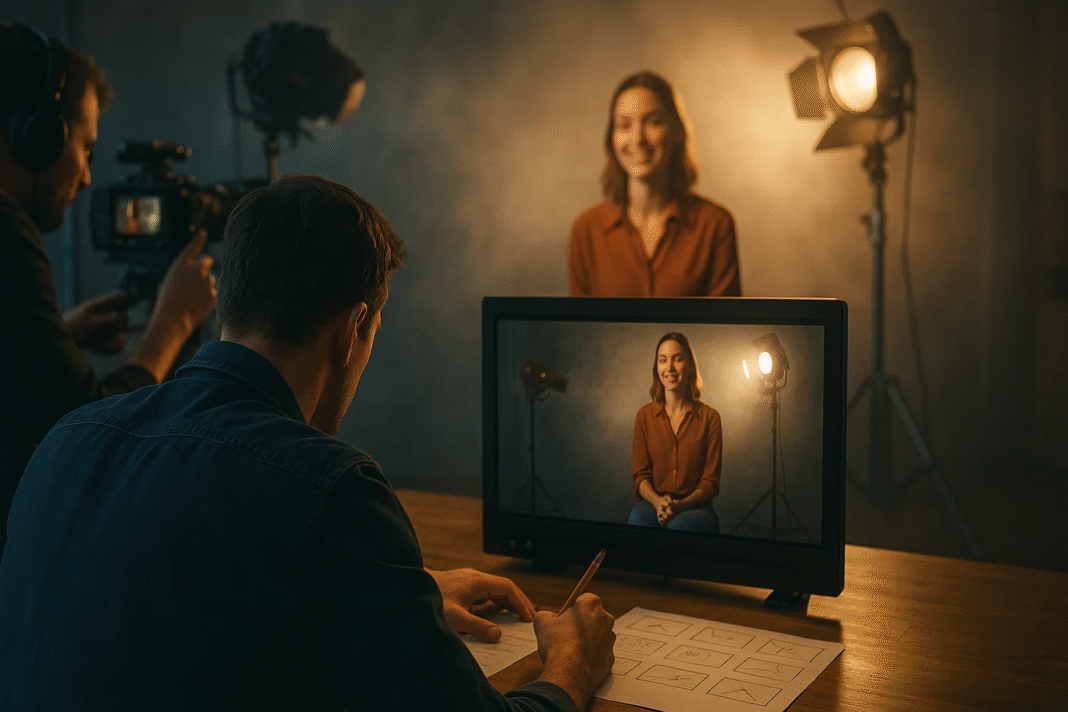Key Takeaways
- Understanding each phase of video production—from concept and pre-production to post-production and distribution—is crucial for creating impactful videos.
- Effective planning, the right tools, and clear communication help avoid common challenges and ensure smooth project execution.
- Optimizing video distribution and promotion maximizes reach, engagement, and return on investment.
In today’s digital-first economy, video content has emerged as one of the most powerful tools for communication, branding, education, and engagement. Whether it’s a corporate explainer video, a social media advertisement, a cinematic short film, or a product demo, video enables businesses and creators to connect with their audiences on a deep and memorable level. According to a recent report by Wyzowl, over 91% of businesses now use video as a marketing tool, and nearly 96% of marketers consider it an integral part of their strategy. Yet, while video content continues to surge in popularity, many still underestimate the complexity and strategic planning required to bring a high-quality video to life.

This is where understanding the video production process becomes crucial. From the initial brainstorming session to the final polished video ready for distribution, each phase of video production plays a critical role in ensuring the end product is compelling, professional, and aligned with its original purpose. Whether you’re a business owner planning your first branded video, a marketing manager coordinating a cross-functional campaign, or a content creator looking to refine your workflow, mastering the end-to-end video production journey is essential to achieving success in a highly competitive digital landscape.
Why This Guide Matters
Despite the widespread adoption of video content, many stakeholders struggle with unclear expectations, unrealistic timelines, and underprepared shoots. These problems often stem from a lack of clarity around the production process itself. Too often, clients and even marketers jump into production without fully appreciating the steps required to get from concept to completion—resulting in wasted time, overextended budgets, and disappointing results.
This in-depth guide titled “From Concept to Completion: The Video Production Process Explained” is designed to eliminate that uncertainty. It breaks down every phase of video production—pre-production, production, post-production, and distribution—into digestible, actionable steps that anyone can follow. By understanding the structure, expectations, and best practices of each stage, you’ll be better equipped to make smarter creative decisions, collaborate more effectively with your production team, and generate a final video that meets both your creative vision and business objectives.
What You’ll Learn
In the sections that follow, we’ll provide a comprehensive walkthrough of the video production process, covering topics such as:
- How to develop a compelling concept and clear video goals
- The importance of scripting, storyboarding, and shot planning
- Budgeting tips and common cost variables
- What actually happens during a production shoot
- Tools and technologies that streamline each stage
- The nuances of editing, sound design, and motion graphics
- How to optimize your final video for various platforms and audiences
We’ll also include real-world examples, tool comparisons, and expert insights to enhance your understanding and help you avoid common pitfalls. This guide is not only informative for beginners but also serves as a strategic framework for seasoned marketers, video producers, and agency professionals looking to refine their approach.
Who Is This Guide For?
This guide is ideal for:
- Marketing professionals planning branded video content
- Business owners investing in video for the first time
- Startups looking to build their brand presence
- Creative agencies and freelancers who need to communicate the production process to clients
- Educators and trainers creating instructional or promotional videos
- Anyone interested in the art and strategy of video storytelling
Whether you plan to hire a professional video production agency or manage the process in-house, understanding each stage—from concept to completion—empowers you to drive better outcomes, save costs, and produce video content that resonates with your audience.
Why SEO Matters in the Video Production Conversation
Search engine visibility is critical when distributing your video content. This guide will also touch on video SEO, including how to optimize metadata, thumbnails, transcriptions, and platform-specific uploads to ensure your videos not only look good but are also discoverable and rankable on platforms like YouTube, Google, and Vimeo. In a saturated content market, strategic SEO can make the difference between your video getting a few views or becoming a viral asset for your brand.
Let’s Begin Your Journey from Idea to Execution
Now that you understand the importance of a structured production process, it’s time to dive into the details. Whether you’re looking to create a one-minute explainer or a full-length branded documentary, this guide will walk you through every essential step. The goal? To equip you with the knowledge, tools, and confidence to turn your video idea into a powerful, finished product that delivers real value to your audience.
Continue reading to uncover the end-to-end breakdown of the video production process, starting with the all-important pre-production phase—where ideas begin to take shape, and visions become viable plans.
Why Understanding the Video Production Process Matters
A well-planned and clearly understood video production process is essential for producing high-quality content that meets business goals, creative expectations, and audience demands. Without a structured workflow, even the most promising video concepts can fall apart due to poor execution, miscommunication, or budget overruns.
This section explores why mastering the video production process is not optional but essential in 2025’s hyper-competitive content environment.
Ensures Strategic Alignment Across Teams
- Keeps creative, marketing, and executive stakeholders aligned on goals and deliverables.
- Prevents misinterpretation of the video’s purpose or message during execution.
- Encourages consistent branding and tone across all video assets.
Example:
A tech company creating a product launch video ensures the marketing team aligns messaging with the product roadmap, while the creative team executes the visuals according to the brand style guide.
Saves Time, Reduces Costs, and Minimizes Rework
- Helps avoid duplicate effort in scripting, shooting, or editing.
- Reduces the need for expensive reshoots by planning the right footage upfront.
- Speeds up post-production with clear editing objectives.
Cost Impact Matrix of Poor Planning vs Structured Workflow:
| Aspect | Without Process | With Structured Process |
|---|---|---|
| Scripting Time | 10–15 hours | 4–6 hours |
| Re-shoot Probability | 60% | <10% |
| Post-Production Hours | 40+ hours | 20–25 hours |
| Total Production Cost | 20–30% Over Budget | On or Below Budget |
Improves Creative Output and Storytelling Quality
- Allows more room for creativity by reducing guesswork and last-minute changes.
- Builds a clear narrative structure with strong hooks and calls to action.
- Supports consistent pacing, tone, and visual appeal.
Creative Benefits:
- Stronger emotional impact due to polished scripting and direction.
- Better use of visuals, music, and pacing to engage viewers longer.
Example:
A nonprofit creating a documentary on climate change achieves stronger emotional storytelling by pre-interviewing subjects and aligning key moments with cinematic visuals.
Boosts Viewer Engagement and Retention
- A clearly planned script and storyboard increase viewer interest from start to finish.
- Strategic shot composition and editing improve visual storytelling and viewer retention.
- Clean audio, good lighting, and coherent pacing lead to longer average watch times.
Viewer Engagement Funnel:
| Production Element | Engagement Impact |
|---|---|
| Opening 5 seconds | Determines bounce rate |
| Audio clarity | Affects credibility and watchability |
| Story pacing | Influences retention rates |
| Call-to-action placement | Drives conversions |
Enables Measurable Business Outcomes
- Every stage of production—from concept to distribution—can be tied to measurable KPIs.
- Marketing teams can track ROI on video spend through metrics like click-through rate, engagement, and conversions.
- Enables A/B testing and performance benchmarking with multiple video versions.
Example:
An eCommerce brand runs two versions of a product video (one with narration, one with only text overlays) and tracks which leads to more conversions.
KPI Mapping Table:
| Production Phase | Key Decisions | Business Impact Metric |
|---|---|---|
| Pre-Production | Target audience, script, goals | Click-through Rate (CTR) |
| Production | Style, visuals, voice | Brand Recall |
| Post-Production | Editing, pacing, polish | Watch Time, Engagement Rate |
| Distribution | Platform, metadata, promotion | Leads, Sales, ROI |
Improves Collaboration with Agencies or Internal Teams
- Establishes clear roles and responsibilities at every stage.
- Makes communication more efficient between project managers, creatives, and clients.
- Enhances transparency around deliverables, timelines, and approvals.
Team Collaboration Framework:
| Role | Primary Responsibilities |
|---|---|
| Creative Director | Defines visual tone and creative vision |
| Scriptwriter | Develops narrative and dialogue |
| Producer | Manages budget, logistics, and schedules |
| Editor | Assembles footage, sound, effects |
| Marketing Lead | Aligns video with campaign goals |
Optimizes for Multi-Channel Distribution
- Facilitates early planning for platform-specific formats (e.g., 16:9 for YouTube, 9:16 for TikTok).
- Improves SEO with properly structured metadata, thumbnails, and captions.
- Enables repurposing of long-form content into micro-content for social media.
Example:
A brand creates a 2-minute product video and extracts:
- A 30-second teaser for Instagram Stories
- A behind-the-scenes video for LinkedIn
- An FAQ-based version for the company’s website
Supports Long-Term Content Strategy and Repurposing
- Encourages creation of reusable content assets (b-roll, testimonials, animations).
- Reduces production costs by shooting multiple deliverables in one session.
- Builds a content library that can serve multiple future campaigns.
Repurposing Matrix:
| Original Content | Repurposed Formats | Target Platform |
|---|---|---|
| Explainer Video | Blog Post, Slide Deck, GIFs | Website, LinkedIn |
| Customer Testimonial | Short Quotes, Case Study Video | Facebook, Email Campaigns |
| Behind-the-Scenes | Recruitment Video, Culture Reel | Careers Page, YouTube |
Conclusion: A Process-Driven Mindset Is the Key to Scalable, High-Impact Video
Understanding the full video production process—from concept through to final delivery—creates a foundation for creativity, efficiency, and ROI. As video becomes more central to marketing and communication strategies across all industries, companies that take a structured, informed approach will consistently produce better, more engaging content.
Whether you’re an internal marketing team, a creative freelancer, or an agency scaling your offerings, investing time in understanding the process is no longer optional—it’s a competitive advantage.
From Concept to Completion: The Video Production Process Explained
- Pre-Production — Planning and Preparation
- Production — Bringing the Vision to Life
- Post-Production — Editing and Finalization
- Distribution and Promotion
1. Pre-Production — Planning and Preparation
Pre-production is the foundation of a successful video project. It’s where ideas are developed, logistics are planned, and creative decisions are made. A well-executed pre-production phase ensures that the production and post-production stages run smoothly, on time, and on budget.
This section breaks down each component of pre-production in detail, offering examples, tools, and planning matrices to help optimize your video workflow.
Concept Development and Goal Setting
Define the Core Purpose
- Determine the primary objective of the video:
- Brand awareness
- Product launch
- Educational tutorial
- Customer testimonial
- Identify key takeaways or calls-to-action (CTAs)
Identify the Target Audience
- Research audience demographics, pain points, and content preferences
- Consider platform behaviors (e.g., TikTok = short-form; YouTube = mid/long-form)
Set SMART Goals
- Specific: Define what the video will accomplish
- Measurable: Use KPIs like views, watch time, or conversions
- Achievable: Set realistic timelines and expectations
- Relevant: Ensure alignment with broader marketing objectives
- Time-Bound: Establish a deadline for production and distribution
Example:
A SaaS company aims to increase signups by 15% in Q3 through an animated explainer video targeting tech startups aged 25–40.
Scripting and Storyboarding
Write a Compelling Script
- Use a hook in the first 5–10 seconds to grab attention
- Follow a narrative arc: problem → solution → result → CTA
- Keep sentences short, engaging, and on-brand
- Include voiceover cues, pauses, and on-screen text instructions
Create a Visual Storyboard
- Translate the script into a visual sequence using sketches or digital frames
- Align each scene with camera angles, transitions, and mood
- Note down lighting, props, and motion graphic needs
Storyboard Example:
| Scene # | Script Line | Visual Description | Notes |
|---|---|---|---|
| 1 | “Struggling with messy finances?” | Woman stressed over piles of bills | Medium shot, dull lighting |
| 2 | “Here’s your solution.” | App interface with clean dashboard | Close-up, motion graphic |
| 3 | “Sign up today.” | Logo, website URL, smiling user | CTA animation, upbeat music |
Budget Planning and Resource Allocation
Estimate Core Budget Components
- Pre-production: scripting, location scouting, casting
- Production: crew, equipment rental, studio fees, talent
- Post-production: editing, sound design, VFX, licensing
- Marketing and distribution: ad spend, SEO, platform fees
Budget Allocation Matrix:
| Category | Low Budget (<$5K) | Mid Budget ($5K–$20K) | High Budget ($20K+) |
|---|---|---|---|
| Script & Storyboard | DIY or freelance writer | In-house creative team | Professional agency or studio |
| Crew | 1–2 person team | Small production team (3–6) | Full crew with director, DOP, etc. |
| Equipment | DSLR camera, natural light | Professional audio & lighting | High-end cameras (RED, ARRI) |
| Post-Production | Basic editing software | Adobe Premiere, After Effects | Color grading, CGI, VFX specialists |
Scheduling and Timeline Creation
Create a Production Timeline
- Define milestones for each stage:
- Concept approval
- Script finalization
- Shoot date(s)
- First edit review
- Final delivery
- Account for buffer time between phases for reviews and revisions
Sample Production Timeline (4-Week Project):
| Week | Milestone |
|---|---|
| Week 1 | Script and storyboard approved |
| Week 2 | Cast talent, confirm locations |
| Week 3 | Shoot video (1–2 days) |
| Week 4 | Post-production and final revisions |
Casting, Crew, and Location Scouting
Casting Talent
- Choose between in-house staff, actors, or influencers
- Evaluate based on:
- Appearance and tone suitability
- Experience and on-camera presence
- Audience relatability
Hiring the Right Crew
- Roles to consider:
- Director or Creative Lead
- Director of Photography (DOP)
- Sound Technician
- Production Assistant
Location Planning
- Scout indoor or outdoor locations that match the script
- Secure filming permits if needed
- Account for lighting, noise levels, and access
Location Assessment Checklist:
| Factor | Indoor Studio | Outdoor Location |
|---|---|---|
| Control Over Light | High | Low (depends on weather/time) |
| Audio Quality | Very high (no background) | Medium to low (traffic, wind) |
| Permits Required | No | Usually yes |
| Cost | Hourly studio fee | Free or permit-based |
Equipment and Shot List Planning
Plan Your Equipment Needs
- Cameras (DSLR, mirrorless, cinema cameras)
- Microphones (lapel, boom, shotgun)
- Lighting kits (softboxes, LEDs, reflectors)
- Tripods, gimbals, sliders
Create a Shot List
- List every shot with details:
- Camera angle
- Type of shot (wide, close-up, over-the-shoulder)
- Purpose of the shot (emotional, instructional, visual)
- Audio requirements
Sample Shot List Format:
| Shot # | Type | Description | Audio Notes |
|---|---|---|---|
| 01 | Wide Shot | Exterior of office building | Natural ambient sounds |
| 02 | Close-Up | Hands typing on keyboard | None |
| 03 | Over-Shoulder | User navigating app on tablet | Voiceover synced later |
Legal and Administrative Preparations
Documentation to Prepare
- Talent release forms
- Location agreements or permits
- NDAs (non-disclosure agreements)
- Insurance for equipment and crew
Copyright and Licensing
- Ensure music, fonts, and third-party assets are licensed
- Review fair use guidelines for external clips or images
Pre-Production Software Tools
| Function | Tool Name | Purpose | Pricing Model |
|---|---|---|---|
| Scripting | Celtx, StudioBinder | Collaborative scriptwriting | Free / Subscription |
| Storyboarding | Milanote, Boords | Visual planning of shots | Freemium / Paid |
| Scheduling | Trello, Notion, ClickUp | Task assignment and timelines | Free / Subscription |
| Budgeting | Excel, StudioBinder | Estimating and tracking expenses | Free / Premium version |
| Equipment Management | Rentex, ShareGrid | Rent cameras and audio gear | Pay-per-item rental |
Conclusion: Pre-Production is the Blueprint for Success
By investing the right time and resources into pre-production, creators and teams ensure that every subsequent phase—production, post-production, and distribution—unfolds efficiently and effectively. Skipping this stage or rushing through it often leads to budget blowouts, miscommunication, and underwhelming video performance.
Pre-production is where strategy meets creativity and logistics meet vision. When done right, it paves the way for a production that is not only smoother but also more impactful and aligned with business goals.
2. Production — Bringing the Vision to Life
The production phase is where the planning and creative vision come to life through the actual recording of video footage. This phase involves a wide range of technical and artistic responsibilities, from lighting and camera work to directing talent and capturing sound. Every decision made in production has a direct impact on the quality, tone, and effectiveness of the final video.
This section explores the key components of the production stage, including setup, filming techniques, on-set collaboration, and problem-solving. It also includes real-world examples, tables, and best practices to optimize outcomes.
Production Preparation: Setting the Stage for Success
Final Pre-Shoot Checklist
- Ensure all equipment is packed and tested (cameras, mics, lights, batteries)
- Review the script and storyboard with the entire crew
- Conduct a safety briefing if filming on-location
- Confirm call sheets and schedules with cast and crew
Example: Pre-Shoot Essentials Checklist
| Item | Status Check | Backup Available? |
|---|---|---|
| Camera & Lenses | Charged and functional | Yes |
| Lighting Equipment | Tested and packed | Yes |
| Audio Gear | Batteries and SD cards | Yes |
| Script/Storyboard | Printed and reviewed | Digital backup |
| Call Sheet | Distributed | Yes |
Lighting and Camera Setup
Lighting Setup for Different Moods
- Three-Point Lighting for interviews:
- Key Light: Main source for subject lighting
- Fill Light: Reduces shadows and balances exposure
- Back Light: Separates subject from background
- Soft Lighting for lifestyle or beauty shots
- High-contrast Lighting for dramatic narratives
Camera Angles and Framing
- Establishing Shots: Wide angles to set context
- Medium Shots: Showcase interaction between people
- Close-ups: Emphasize emotion or product features
- Over-the-shoulder Shots: For dialogue and tutorials
- POV Shots: Create immersive or subjective perspective
Camera Techniques Matrix:
| Camera Shot | Best Used For | Impact on Viewer |
|---|---|---|
| Wide Shot | Setting the scene | Orientation and scale |
| Close-Up | Emphasizing detail or emotion | Emotional engagement |
| Tracking/Dolly Shot | Following movement | Immersive storytelling |
| Handheld Shot | Action, tension, realism | Dynamic and raw aesthetic |
| Drone Shot | Outdoor scenery, large facilities | Spectacle, production value |
Directing Talent and On-Camera Presence
Working with Professional Talent
- Conduct quick rehearsals before takes
- Provide consistent direction without micromanaging
- Focus on tone, body language, and delivery style
Working with Non-Actors (e.g., Employees, Clients)
- Use cue cards or prompts to reduce anxiety
- Encourage natural delivery instead of memorization
- Schedule more takes to capture usable footage
Example Tips for Directing Testimonial Interviews:
- Ask open-ended questions
- Avoid scripted answers
- Use follow-ups to prompt emotional or personal responses
Audio Capture: The Often-Overlooked Essential
Types of Microphones and Their Use
- Lapel Microphones (Lavaliers):
- Ideal for interviews and seated conversations
- Easily hidden under clothing
- Shotgun Microphones:
- Mounted on boom poles or cameras
- Best for directional audio from a distance
- Handheld Microphones:
- Used in live settings, vlogs, or street interviews
Best Practices for High-Quality Audio
- Record room tone (ambient sound) for post-production
- Monitor audio levels continuously using headphones
- Keep mics close to the source without entering frame
Audio Recording Comparison Table:
| Microphone Type | Use Case | Pros | Cons |
|---|---|---|---|
| Lavalier | Interviews, presentations | Hands-free, clear vocals | Sensitive to fabric noise |
| Shotgun | Narrative, doc-style shoots | Directional, clean ambient capture | Requires boom operator |
| Handheld | Live events, news reporting | Durable, simple setup | Visible in frame |
Filming Process: Scene Execution and Take Management
Capturing Multiple Takes
- Always shoot at least 2–3 takes per scene
- Try different camera angles and distances
- Use B-roll footage to cover edits or transitions
Logging Takes and Notes
- Use a script supervisor or digital clapper board app
- Record take numbers, comments, and issues
- Mark the best takes for post-production
Scene Tracking Template:
| Scene | Take # | Description | Director Notes | Keep? |
|---|---|---|---|---|
| Scene 2 | Take 1 | Opening walk-in shot | Slightly out of frame | No |
| Scene 2 | Take 2 | Same shot, tighter framing | Smooth movement, correct timing | Yes |
| Scene 2 | Take 3 | Close-up alternate | Background noise | No |
Capturing B-Roll and Supplemental Footage
Why B-Roll Matters
- Adds visual depth and editorial flexibility
- Helps transition between scenes or hide jump cuts
- Essential for product videos, testimonials, and tutorials
B-Roll Ideas by Video Type:
| Video Type | B-Roll Suggestions |
|---|---|
| Corporate Video | Office space, team meetings, branding elements |
| Product Explainer | Close-ups of features, unboxing, usage shots |
| Testimonial | User in environment, team interactions |
| Event Recap | Crowd shots, speaker highlights, venue |
Managing On-Set Workflow and Team Collaboration
Establish Clear Roles on Set
- Director: Creative decision-maker, talent coach
- Producer: Logistics, scheduling, and budget
- Director of Photography (DOP): Camera, lighting, framing
- Sound Technician: Audio recording and monitoring
- Production Assistant: Support tasks and logistics
Use Real-Time Communication Tools
- Walkie-talkies or headsets for large sets
- Slack, Trello, or Notion boards for daily check-ins and updates
- Cloud storage for syncing reference files and shoot logs
Handling Real-Time Challenges
Common On-Set Issues and Solutions
| Challenge | Cause | Solution |
|---|---|---|
| Weather Disruption | Outdoor shoot, unexpected rain | Move indoors or use weatherproof equipment |
| Talent No-Show | Last-minute cancellation | Have backup talent or adjust shoot order |
| Audio Interference | Environmental noise (traffic, AC) | Pause shoot, use directional mics or ADR later |
| Equipment Failure | Battery dead, lens error | Pack spares and test gear before shooting |
Example Scenario:
During a branded shoot for a fashion startup, outdoor wind noise ruined initial takes. The solution: switch to an indoor location and schedule ADR (Automated Dialogue Replacement) for cleaner voiceover.
Visual Consistency and Scene Continuity
Ensure Continuity Across Shots
- Use reference photos between takes for props and actor placement
- Keep wardrobe, lighting, and framing consistent
Track Scene Elements
- Maintain scene logs for hair/makeup, wardrobe, background
- Use chalkboard clapper for syncing audio and video
Conclusion: Production Is Where Vision Becomes Reality
The production phase is the most resource-intensive and collaborative stage of the video creation process. It requires a perfect balance of technical precision, artistic direction, and on-set problem-solving. When properly planned and executed, production results in raw footage that is not only usable but high-impact and ready for transformation in post-production.
By maintaining discipline across shot management, audio quality, lighting control, and team communication, production becomes the platform where ideas evolve into visual narratives that connect, convert, and compel audiences.
3. Post-Production — Editing and Finalization
The post-production phase is where raw footage is transformed into a polished, professional video that is ready for distribution. This is where the creative vision takes final shape through editing, color correction, audio mastering, motion graphics, and review cycles. Post-production requires technical precision, storytelling finesse, and attention to detail to ensure the video meets business goals and engages viewers effectively.
This comprehensive section breaks down each stage of post-production, offering best practices, practical examples, and useful tables for an efficient and high-quality video finalization process.
Video Editing: Shaping the Narrative
Footage Review and Organization
- Import all video and audio files into editing software
- Organize footage into labeled folders:
- A-roll (main footage)
- B-roll (supplemental footage)
- Audio (dialogue, music, sound effects)
- Graphics and titles
Crafting the Rough Cut
- Assemble the scenes in chronological or storyboard order
- Focus on clarity, pacing, and narrative flow
- Cut out awkward pauses, repeated takes, and off-script moments
Creating the Final Cut
- Fine-tune transitions, shot timing, and pacing
- Align visuals with the tone of the script or voiceover
- Insert b-roll to enhance engagement and visual appeal
Video Editing Workflow Matrix:
| Editing Stage | Goal | Tools Used | Estimated Time |
|---|---|---|---|
| Ingestion | Import and organize footage | Adobe Premiere Pro, Final Cut Pro | 2–4 hours |
| Rough Cut | Establish narrative and sequence | Premiere Pro, DaVinci Resolve | 4–8 hours |
| Fine Cut | Refine visuals, transitions, and pacing | After Effects, Final Cut Pro | 6–12 hours |
| Final Cut | Final edits, audio sync, export | Premiere, Resolve | 4–6 hours |
Color Correction and Grading
Color Correction Basics
- Adjust white balance, exposure, and contrast for consistency
- Match colors between shots filmed in different lighting conditions
Color Grading for Style
- Apply color presets (LUTs) or custom grading for mood:
- Warm tones for emotion or lifestyle
- Cool tones for corporate or tech videos
- Ensure visual consistency throughout the video
Color Grading Mood Chart:
| Color Palette | Emotional Effect | Common Use Cases |
|---|---|---|
| Warm/Orange | Friendly, inspiring | Lifestyle, brand stories |
| Cool/Blue | Professional, modern | Tech, corporate videos |
| High Contrast | Dramatic, intense | Films, product launches |
| Desaturated | Serious, documentary feel | Testimonials, interviews |
Sound Design and Audio Mixing
Clean Up and Normalize Audio
- Remove background noise and mic interference
- Adjust levels for consistency across clips
- Use EQ to clarify voices and reduce harsh frequencies
Add Sound Effects and Music
- Include ambient sound, transitions, and motion sound effects
- Use royalty-free or licensed music tracks that support tone and pace
- Sync background music to key visual transitions or emotional beats
Voiceover Synchronization
- Sync recorded voiceovers with visuals and on-screen text
- Ensure clarity, timing, and tone alignment
Audio Layering Template:
| Audio Element | Purpose | Tools Used |
|---|---|---|
| Dialogue | Main speech, voiceovers | Adobe Audition, Audacity |
| Ambient Sound | Natural environment feel | Soundstripe, Epidemic Sound |
| Music Bed | Background mood | Artlist, PremiumBeat |
| Sound Effects (SFX) | Emphasize actions or transitions | Freesound, Envato Elements |
Motion Graphics and Visual Effects
Enhance with On-Screen Text
- Use lower-thirds for names, titles, or product descriptions
- Incorporate animated infographics or key statistics
- Keep font styles consistent with brand identity
Logo Animations and Intros
- Create branded intros or outros with motion graphics
- Use subtle transitions to maintain viewer immersion
Visual Effects (VFX)
- Basic VFX: green screen compositing, background replacement
- Advanced VFX: tracking, masking, 3D overlays
Motion Graphic Elements by Video Type:
| Video Type | Recommended Motion Graphics |
|---|---|
| Product Explainer | Animated icons, callout text, transitions |
| Testimonials | Lower-thirds, company logos |
| Corporate Brand Video | Animated logo intro, visual overlays |
| YouTube Tutorials | Text overlays, subscribe animations |
Subtitles, Captions, and Accessibility
Create Accurate Subtitles
- Generate automatic transcripts or use manual captioning
- Sync with audio for clarity and accuracy
- Offer multilingual subtitles for global audiences
Improve Accessibility
- Add closed captions for hearing-impaired users
- Use readable fonts and high-contrast text boxes
SEO Benefit of Captions
- Boost video visibility on YouTube and search engines
- Improve watch time and engagement metrics
Review and Feedback Loop
Internal Review
- Team review for creative and technical errors
- Cross-check visuals with storyboard and original goals
Client or Stakeholder Review
- Share via review platforms like Frame.io or Vimeo Review
- Collect timestamped feedback and implement revisions
Version Control
- Maintain clearly labeled versions: v1.0, v1.1, Final_v2
- Document changes between rounds of feedback
Feedback and Revisions Tracker:
| Version | Reviewer | Change Requested | Status |
|---|---|---|---|
| v1.0 | Marketing Lead | Shorten intro by 3 seconds | Completed |
| v1.1 | Creative Director | Add animated CTA at end | In Progress |
| Final_v1 | Client | Approved | Ready for Export |
Exporting and Delivery
Choose the Right Export Settings
- Match resolution to platform requirements (e.g., 1920×1080 for YouTube, 1080×1920 for TikTok)
- Use optimal codec (H.264) and bitrates for file size vs. quality balance
- Export multiple versions:
- High-quality master file
- Web-optimized version
- Platform-specific aspect ratios
Export Settings Reference Table:
| Platform | Resolution | Aspect Ratio | Recommended Codec |
|---|---|---|---|
| YouTube | 1920×1080 | 16:9 | H.264 |
| Instagram Reels | 1080×1920 | 9:16 | H.264 |
| 1080×1080 | 1:1 | H.264 | |
| 1280×720 | 16:9 | H.264 | |
| TikTok | 1080×1920 | 9:16 | H.264 |
Archiving and Backup
File Organization
- Store project files, exports, and assets in structured folders
- Raw Footage
- Final Edits
- Audio Assets
- Motion Graphics
Cloud Backup and Archiving
- Use cloud storage (Google Drive, Dropbox, Frame.io) for team sharing
- Keep a long-term archive on external drives for re-edits or future reuse
Metadata and Tags
- Label files with date, version, and project name for easy retrieval
Conclusion: Post-Production is the Art of Refinement
Post-production is not just about editing footage — it’s about bringing the story to life, enhancing emotional impact, and optimizing for maximum engagement. It’s the final step that transforms raw materials into a compelling narrative that aligns with brand goals and captivates audiences.
From visual editing and motion design to sound mixing and captioning, each element contributes to the overall professionalism, clarity, and effectiveness of the video. A well-executed post-production process ensures your content is not only beautiful and functional but also SEO-optimized, accessible, and platform-ready.
4. Distribution and Promotion
Once a video has been carefully produced and polished during post-production, the final and equally critical step is distribution and promotion. Without a strategic distribution plan, even the most compelling video may fail to generate engagement, leads, or conversions. This phase ensures that your video reaches the right audience on the right platforms at the right time — while also tracking and optimizing its performance.
This section breaks down the full video distribution and promotion strategy into actionable sub-sections, with SEO-optimised practices, channel-specific recommendations, promotional tactics, and performance tracking tools.
Platform Selection: Choosing the Right Distribution Channels
Owned Media
- Brand Website
- Embed videos on landing pages, blogs, or product pages
- Use schema markup for rich results in search
- Email Marketing
- Embed thumbnail linked to landing page or YouTube
- Use video in drip campaigns, product launches, and onboarding flows
Earned Media
- PR Outreach
- Share videos with journalists or industry blogs
- Influencer Distribution
- Collaborate with content creators for reposts or reviews
- Community Forums
- Share tutorials or explainers on Reddit, Quora, or niche forums
Paid Media
- Social Ads
- Promote videos on Facebook, Instagram, LinkedIn, YouTube
- Native Advertising
- Platforms like Outbrain or Taboola for video ad placement
- Display Campaigns
- Use banner retargeting with embedded video thumbnails
Platform Strategy Matrix:
| Platform | Best For | Video Type | Optimization Tip |
|---|---|---|---|
| YouTube | Long-form, searchable content | Explainers, tutorials, testimonials | Use keyword-rich titles & transcripts |
| Instagram Reels | Short-form, viral content | Teasers, behind-the-scenes | Hook in first 3 seconds |
| B2B and professional content | Case studies, culture videos | Add captions; focus on storytelling | |
| TikTok | Creative, highly engaging content | Challenges, trends, POVs | Leverage trending sounds/hashtags |
| Website | SEO and lead generation | Product videos, FAQs, demos | Use schema markup + CTA placement |
Video SEO: Optimizing for Visibility
Title Optimization
- Use primary keywords early in the title
- Keep titles between 50–60 characters
- Create compelling, benefit-focused phrasing
Video Description
- Include a 200–300 word keyword-rich description
- Add links to your website, related resources, or CTAs
- Use timestamps to improve user experience
Tags and Metadata
- Add 5–8 relevant keyword tags
- Use branded tags for video grouping
- Optimize filenames before uploading (e.g., product-demo-2025.mp4)
SEO Checklist for YouTube:
| Element | Optimized Practice |
|---|---|
| Title | “Best CRM Tools for Startups in 2025” |
| Description | Includes target keywords and CTAs |
| Tags | CRM, customer software, sales funnel, SaaS |
| Thumbnail | Custom, branded, clear contrast |
| Captions | Auto-generated edited or uploaded manually |
Thumbnail Design and First Impressions
Why Thumbnails Matter
- Thumbnails are often the first thing users see
- Influence click-through rate (CTR) dramatically
Best Practices
- Use high contrast between text and background
- Feature human faces expressing emotion
- Add a short, keyword-aligned title overlay
Thumbnail Performance Tips:
- Maintain a consistent visual style across your channel
- Test different thumbnails through A/B testing on platforms like TubeBuddy
Timing and Scheduling
Choose Optimal Publishing Times
- Research when your audience is most active by platform
- Use analytics tools to determine high-engagement windows
Recommended Posting Times (Based on Global Benchmarks):
| Platform | Best Days | Best Times (Local Time) |
|---|---|---|
| YouTube | Thursday–Saturday | 12 PM – 4 PM |
| Instagram Reels | Tuesday–Friday | 9 AM – 12 PM |
| Tuesday–Thursday | 8 AM – 11 AM | |
| Monday–Friday | 1 PM – 4 PM | |
| TikTok | Daily | 6 PM – 10 PM |
Cross-Platform Promotion Strategy
Repurposing for Maximum Reach
- Break long-form video into micro-content clips for social platforms
- Extract quotes for blog posts or social media graphics
- Turn videos into podcasts or audiograms
Content Repurposing Matrix:
| Original Content | Repurposed Format | Distribution Channel |
|---|---|---|
| Product Demo (3 mins) | 30-sec teaser | Instagram Reels, TikTok |
| Explainer Video | Blog with embedded video | Website, LinkedIn |
| Customer Testimonial | Social proof carousel | Instagram, Facebook, Email |
| Webinar Recording | Educational YouTube playlist | YouTube, Internal Training |
Email and CRM Integration
Embedding in Email Campaigns
- Use a video thumbnail with a play button linking to a landing page
- Include video in onboarding sequences, product launches, or upsell campaigns
CRM and Marketing Automation Tools
- Track who watched the video and trigger follow-ups
- Use tools like HubSpot, Mailchimp, or ActiveCampaign
Paid Promotion and Retargeting
Video Ad Platforms
- YouTube Ads (Google Ads): TrueView in-stream, bumper ads
- Meta Ads: Facebook and Instagram video placements
- LinkedIn Ads: Sponsored video content for B2B targeting
Audience Targeting Options
- Lookalike audiences based on website visitors
- Retargeting viewers who watched more than 50% of your last video
- Behavioral targeting (interests, job titles, industries)
Video Ad Budget Planner:
| Platform | Daily Budget Range | Suggested Ad Type | Target Goal |
|---|---|---|---|
| YouTube | $10–$100 | In-Stream, Discovery | Brand awareness |
| $10–$200 | Video Feed, Stories | Engagement, conversion | |
| $50–$300 | Sponsored Video, InMail | B2B lead generation | |
| Instagram Reels | $20–$150 | Story Ads, Reels Placement | Viral reach, product launch |
Tracking Performance and Analytics
Key Performance Indicators (KPIs)
- View Count: Measures reach and exposure
- Watch Time: Indicates engagement quality
- Click-Through Rate (CTR): Effectiveness of thumbnail and title
- Conversion Rate: Tracks actions taken after watching
Platform Analytics Tools
- YouTube Studio: In-depth engagement reports
- Meta Business Suite: Facebook/Instagram ad and organic performance
- Google Analytics: Tracks video conversion on websites
- Wistia/Vimeo: Advanced heatmaps and viewer behavior
Video Performance Metrics Dashboard Example:
| Metric | Target Benchmark | Actual (Sample Video) |
|---|---|---|
| View Count | 5,000+ in 30 days | 6,800 |
| Watch Time | 40–60% of video length | 52% |
| CTR | 3–5% | 4.3% |
| Conversion Rate | 2–5% (based on CTA) | 3.7% |
A/B Testing and Optimization
What to Test
- Different thumbnails
- Alternate video titles or intros
- CTA placements (beginning, middle, or end)
Optimization Tools
- TubeBuddy, VidIQ (for YouTube)
- Google Optimize (for website video embeds)
- Meta A/B testing tools (for ad variations)
Conclusion: Distribution is the Engine of Impact
A great video without a smart distribution strategy is a missed opportunity. The distribution and promotion phase transforms your video from a creative asset into a growth engine, generating traffic, leads, conversions, and brand equity. By strategically deploying content across high-impact channels, optimizing for search, repurposing intelligently, and leveraging data to refine performance, brands can dramatically improve their video marketing ROI.
Effective distribution isn’t just about where you post your video — it’s about when, how, and to whom. Businesses that invest in this phase often see exponential returns on their production investment.
Tools and Software for Each Stage of the Video Production Process
The video production lifecycle — from planning to publishing — relies heavily on the right tools and software to streamline workflows, improve collaboration, maintain quality, and ensure efficiency. With the rise of cloud-based platforms and AI-powered editing, the modern video production toolkit has evolved rapidly. This section explores the best and most widely used tools for each stage of the process, offering a comprehensive view into how software supports successful video creation.
Each tool listed below is optimized for usability, professional output, and scalability across different team sizes and budgets.
Pre-Production Tools: Planning, Scripting, and Scheduling
Scriptwriting and Storyboarding
- Celtx
- All-in-one platform for scriptwriting and storyboarding
- Includes production notes, media asset integration
- Collaborative features for remote teams
- StudioBinder
- Offers script formatting, shot listing, and call sheet creation
- Ideal for production companies managing multiple projects
- Drag-and-drop storyboard and shooting schedule
- WriterDuet
- Real-time collaboration for screenwriters
- Supports industry-standard formatting
- Ideal for remote creative teams
Project Management and Scheduling
- Trello / Notion / ClickUp
- Kanban-based task management tools
- Customizable boards for shot lists, deadlines, and task tracking
- Integration with Google Drive and Slack for collaboration
- ShotDeck
- A visual reference tool for planning aesthetics
- Searchable library of film stills for creative direction
- Useful for mood boards and visual planning
Pre-Production Tool Comparison Table:
| Tool | Primary Function | Best For | Pricing |
|---|---|---|---|
| Celtx | Scriptwriting, storyboarding | Indie filmmakers, small studios | Freemium / Paid |
| StudioBinder | Production planning | Agencies, production managers | Paid |
| Trello / Notion | Project/task management | Teams with flexible workflows | Freemium / Paid |
| WriterDuet | Collaborative screenwriting | Remote creative teams | Freemium / Paid |
| ShotDeck | Visual planning, references | Directors, DPs, content strategists | Paid (Subscription) |
Production Tools: Cameras, Audio, Lighting & Monitoring
Camera Control and Monitoring Apps
- Blackmagic Camera App
- Control ISO, shutter speed, white balance
- Ideal for mobile video professionals and social content
- Available for iOS with advanced film-like quality options
- Artemis Pro
- Director’s viewfinder app to plan shots with lens and camera presets
- Visualizes framing and depth of field
- Used by professional cinematographers
Lighting and Audio Measurement
- Lumu Power
- Light meter for iPhone
- Measures color temperature and exposure
- Helps optimize lighting setups on location
- SoundTools dB Meter App
- Measures sound levels and peaking during shoots
- Assists in setting proper gain and avoiding audio distortion
Equipment Rental Platforms
- ShareGrid / KitSplit
- Rent high-end cameras, lenses, lighting, and audio gear
- Access to verified vendors and insurance coverage
- Ideal for freelancers and production companies
On-Set Tech Stack Matrix:
| Tool/App | Use Case | Platform | Pro Tip |
|---|---|---|---|
| Blackmagic Camera | Mobile cinematography | iOS | Shoot in ProRes for better color grading |
| Artemis Pro | Shot planning and framing | iOS / Android | Match lenses virtually before shoot day |
| Lumu Power | Lighting measurement | iOS | Use for indoor/exterior balance |
| SoundTools dB Meter | Real-time audio monitoring | iOS / Android | Sync with lav mics for test readings |
| ShareGrid | Gear rental and insurance | Web | Ideal for short-term gear upgrades |
Post-Production Tools: Editing, Color, Sound, and Graphics
Video Editing Platforms
- Adobe Premiere Pro
- Industry-standard editing tool
- Supports multi-camera, VR, and proxy workflows
- Integration with After Effects, Audition, and Media Encoder
- DaVinci Resolve
- All-in-one editing, color correction, and audio mixing suite
- Best-in-class color grading tools
- Available in free and Studio versions
- Final Cut Pro X
- Mac-exclusive NLE software
- Magnetic timeline for intuitive editing
- Popular for fast-paced editing and social content
Audio Post-Production
- Adobe Audition
- Multitrack audio editing and repair
- Noise reduction, reverb removal, EQ presets
- Essential for podcasts, interviews, and dialogue cleanup
- Audacity
- Open-source audio tool for basic edits
- Ideal for voiceovers and level normalization
- Limited advanced mixing capabilities
Motion Graphics and VFX
- Adobe After Effects
- Create animated titles, infographics, and lower-thirds
- Used for keying, compositing, and kinetic typography
- Compatible with Premiere Pro workflows
- Blender
- 3D animation and VFX pipeline
- Completely free and open-source
- Used for high-end visual effects and 3D modeling
Post-Production Tool Comparison Table:
| Tool | Function | Skill Level | Pricing |
|---|---|---|---|
| Adobe Premiere Pro | Video editing | Intermediate–Advanced | Paid (Subscription) |
| DaVinci Resolve | Editing + Color + Audio | Intermediate | Free / Studio |
| Final Cut Pro X | Editing (Mac) | Beginner–Intermediate | One-time license |
| Adobe Audition | Audio editing and mixing | Intermediate | Paid (Subscription) |
| Blender | 3D animation and VFX | Advanced | Free |
| Adobe After Effects | Motion graphics, compositing | Intermediate–Advanced | Paid (Subscription) |
Distribution and Promotion Tools: Hosting, Analytics, and Advertising
Video Hosting and SEO
- YouTube Studio
- Upload, tag, and schedule video releases
- Monitor CTR, impressions, retention rate
- Offers auto-captioning and advanced analytics
- Vimeo Pro / Business
- Ad-free hosting with customizable players
- Ideal for brand websites, client presentations, and B2B
- Offers lead capture and review tools
- Wistia
- Enterprise-level video hosting with marketing integrations
- Heatmaps, email capture, CTA overlays
- Syncs with HubSpot, Marketo, and CRMs
Social Media Publishing
- Later / Buffer / Hootsuite
- Schedule videos across platforms (Instagram, LinkedIn, Facebook)
- Auto-publish with captions and hashtags
- View performance dashboards and engagement metrics
Ad Campaign Management
- Meta Ads Manager
- Run paid video campaigns on Facebook, Instagram
- Custom audience targeting, A/B testing, and performance reporting
- Google Ads (YouTube)
- Target by keywords, behaviors, and viewer intent
- Access formats like TrueView, bumper ads, and discovery ads
Distribution Tool Matrix:
| Tool | Primary Use | Best For | Integrations |
|---|---|---|---|
| YouTube Studio | Hosting, analytics, SEO | Organic and search-driven traffic | Google Ads, YouTube Analytics |
| Vimeo | Private hosting, client review | Agencies and businesses | HubSpot, Slack, Notion |
| Wistia | Lead capture, marketing analytics | SaaS, B2B, gated content | CRMs, Zapier, email platforms |
| Buffer / Later | Social video publishing | Solopreneurs, small teams | Instagram, Facebook, LinkedIn |
| Meta Ads Manager | Paid social video campaigns | DTC brands, marketers | Facebook Pixel, Shopify, CRM |
Analytics and Optimization Tools: Performance Tracking
Core Performance Metrics
- View count and watch time
- Audience retention curve
- CTR on thumbnails and descriptions
- Engagement rate (likes, comments, shares)
- Conversion rate (signups, downloads, sales)
Recommended Tools
- YouTube Analytics
- Insights on traffic sources, viewer demographics, and CTR
- Real-time performance tracking
- Google Analytics (with video tagging)
- Tracks video views on websites
- Monitors conversion funnels and bounce rates
- TubeBuddy / VidIQ
- SEO optimization for YouTube content
- A/B testing thumbnails, keyword research, rank tracking
- Hotjar / Microsoft Clarity
- Heatmaps and session recordings for embedded video analysis
- Understand viewer behavior on landing pages
Video Analytics Dashboard Sample:
| Metric | Tool Used | Target Value | Actual (Sample) |
|---|---|---|---|
| View Count | YouTube Analytics | 10,000/month | 11,800 |
| Watch Time | Wistia | 45–60% | 53% |
| Conversion Rate (CTA) | Google Analytics | 3–5% | 4.2% |
| CTR (Thumbnail) | TubeBuddy | 3%+ | 3.6% |
Conclusion: An Integrated Tech Stack Powers Professional Video Production
From concept to distribution, each phase of the video production process benefits from the use of specialized, purpose-built tools. Whether you’re a content creator, marketing agency, or in-house video team, choosing the right tools at every stage not only saves time but also enhances quality and output consistency.
An optimized tech stack — tailored to your team’s size, goals, and production style — ensures a seamless workflow, scalable results, and competitive edge in the digital video landscape. Investing in the right software and tools is essential for delivering high-impact content that performs across platforms and delivers measurable business outcomes.
Common Challenges in Video Production (and How to Avoid Them)
Producing professional-grade video content involves a range of moving parts, from creative planning to technical execution and distribution. Along the way, many video teams face recurring challenges that can derail timelines, inflate budgets, or compromise final quality. By identifying and addressing these obstacles proactively, teams can prevent costly errors and ensure smoother workflows.
This section explores the most common video production challenges — across pre-production, production, post-production, and distribution — and provides strategic solutions, real-world examples, and visual matrices to mitigate risks and maintain creative control.
1. Lack of Clear Objectives and Strategy
The Challenge
- Producing a video without a defined goal leads to vague messaging and poor ROI
- Misalignment between creative and marketing teams on the video’s purpose
Impact
- Wasted resources on the wrong format or audience
- Low engagement and viewer confusion
Solution
- Establish SMART goals before pre-production
- Align objectives with buyer stage and content funnel
- Use video briefs to unify teams
Video Goals Alignment Table:
| Objective | Video Type | Key Metrics |
|---|---|---|
| Build brand awareness | Brand film, lifestyle video | Impressions, reach, view count |
| Educate prospects | Explainer, how-to video | Watch time, retention, shares |
| Convert leads | Product demo, testimonials | CTR, conversion rate |
| Support customers | Onboarding, FAQ videos | Engagement, support ticket drop |
2. Inadequate Planning During Pre-Production
The Challenge
- Skipping scripting, scheduling, or budgeting
- Poor casting or location scouting
- Miscommunication among stakeholders
Impact
- Disorganized shoot days, missing footage
- Scope creep and cost overruns
- Delays in delivery
Solution
- Use tools like StudioBinder or Notion for pre-production tracking
- Finalize scripts, shot lists, and talent contracts in advance
- Schedule rehearsals or table reads
Pre-Production Risk Assessment Matrix:
| Task | Potential Risk | Preventative Action |
|---|---|---|
| Scriptwriting | Incomplete messaging or structure | Finalize script with stakeholder sign-off |
| Scheduling | Double-bookings, overtime | Use call sheets and production calendars |
| Location scouting | Permits denied, poor acoustics | Visit and test sites ahead of shoot |
| Casting | No-shows, misfit talent | Audition early, use contracts |
3. Budget Overruns and Hidden Costs
The Challenge
- Underestimating total production costs
- Unexpected equipment rentals, location fees, or overtime pay
- Failing to include post-production and promotion in the budget
Impact
- Stalled projects due to funding issues
- Reduced video quality due to cost-cutting
- Strained client relationships
Solution
- Create a detailed itemized budget
- Add a 10–15% contingency buffer
- Track actuals vs projections using budget management tools
Sample Budget Allocation Breakdown:
| Category | Estimated % of Total Budget |
|---|---|
| Pre-Production | 15–20% |
| Production (crew, gear) | 30–40% |
| Post-Production | 20–25% |
| Marketing & Distribution | 10–20% |
| Contingency Reserve | 10–15% |
4. Technical Issues During Production
The Challenge
- Camera, lighting, or audio equipment failure
- Poor lighting setups or inconsistent exposure
- Inadequate sound quality or background noise
Impact
- Need for re-shoots or rescheduling
- Low-quality footage unfit for editing
- Increased post-production time and cost
Solution
- Conduct technical rehearsals before filming
- Use professional gear or verified rental services
- Monitor audio and visuals in real time on set
On-Set Issue Prevention Checklist:
| Technical Area | Common Mistake | Proactive Measure |
|---|---|---|
| Lighting | Overexposed or shadowy shots | Set white balance and test 3-point setup |
| Audio | Wind, echo, or hiss noise | Use lavalier/shotgun mics + sound tests |
| Camera | Poor framing, shaky footage | Use gimbals/tripods + director’s monitor |
| Batteries/Storage | Running out mid-shoot | Pack extras, format cards in advance |
5. Poor On-Camera Performance
The Challenge
- Talent delivers unnatural, robotic, or nervous performances
- Employees or clients unfamiliar with being on camera
- Misaligned tone and body language with brand identity
Impact
- Reduced credibility and viewer engagement
- Awkward pacing and need for reshoots
Solution
- Conduct rehearsals or table reads prior to shoot
- Use cue cards and conversational scripts
- Coach talent on posture, voice, and eye contact
Example: Coaching Non-Professional Speakers
- Use warm-up exercises before filming
- Remind them to breathe between phrases
- Film in short takes and edit together later
6. Overloaded Post-Production Workflow
The Challenge
- Delays due to disorganized file storage
- Unclear version control between editors
- Lack of visual or audio consistency
Impact
- Missed deadlines
- Inconsistent final output
- Team burnout
Solution
- Use shared folder structures (e.g., Frame.io, Dropbox, Notion)
- Label every version clearly (e.g., “V1_Rough”, “V2_ClientEdits”)
- Standardize color grading, LUTs, and audio levels
Post-Production Workflow Efficiency Table:
| Step | Tool | Best Practice |
|---|---|---|
| File Organization | Dropbox / Google Drive | Use folders: Raw, B-Roll, Audio, Final |
| Editing | Premiere / Resolve | Use timeline templates + time-saving macros |
| Review Process | Frame.io / Wipster | Timestamped comments to reduce email chains |
| Export & Delivery | Vimeo / WeTransfer | Deliver in multiple resolutions + backup download |
7. Ineffective Distribution Strategy
The Challenge
- Publishing content without targeting the right platforms
- Ignoring SEO metadata, thumbnails, or CTAs
- Not budgeting time or money for paid promotion
Impact
- Low view count, watch time, or engagement
- No ROI from expensive production efforts
Solution
- Develop a platform-specific promotion plan before editing
- Use keyword research for titles and tags
- Test thumbnails, captions, and CTAs for optimization
Distribution Strategy Framework:
| Channel | Video Format | SEO Tips | Target Audience |
|---|---|---|---|
| YouTube | Long-form content | Keyword-rich title + timestamps | Search-driven viewers |
| Instagram Reels | Short vertical videos | Hook in first 3 seconds | Mobile-first, social users |
| Brand + B2B case studies | Captioned videos + value-driven intros | Professionals, decision-makers | |
| Website | Explainers, testimonials | Use schema markup + clear CTAs | Converting leads |
8. Misalignment Between Creative and Business Goals
The Challenge
- Creative decisions do not support business outcomes
- Video style or script doesn’t reflect brand tone or audience expectations
Impact
- Viewers feel disconnected from the brand
- Internal dissatisfaction or project rejection
Solution
- Involve marketing or sales teams during pre-production
- Share brand guidelines and buyer personas with creatives
- Conduct reviews at script, storyboard, and rough cut stages
Creative Alignment Matrix:
| Creative Element | Business Function | Alignment Check |
|---|---|---|
| Script tone | Brand voice | Matches tone of ads, website, and emails |
| Visual style | Audience expectations | Resonates with demographic and psychographic |
| CTA | Business funnel goals | Encourages signup, download, or demo |
| Length | Channel retention rates | Tailored to platform best practices |
9. Lack of Post-Campaign Analysis
The Challenge
- Teams fail to review what worked and what didn’t
- No lessons applied to future projects
Impact
- Repeating avoidable mistakes
- No data to guide scaling or optimization
Solution
- Use video analytics tools (e.g., YouTube Studio, Wistia)
- Create internal reports with performance KPIs
- Document insights for future video content planning
Video Performance Retrospective Report Example:
| Metric | Target | Actual | Next Steps |
|---|---|---|---|
| View Count | 10,000 | 6,300 | Boost with paid promotion + repost optimized |
| Watch Time | 50% | 43% | Shorten intro; test new thumbnails |
| CTA Conversion | 5% | 2.8% | Make CTA more prominent; try mid-video |
Conclusion: Planning for Challenges Enables Creative Excellence
Every phase of the video production process presents unique challenges — from strategy and planning to shooting, editing, and distribution. However, with systematic preparation, clear communication, and the right tools, most of these challenges are preventable or easily resolved.
By identifying potential roadblocks early and equipping your team with proactive solutions, you enable a video production process that is efficient, cost-effective, and consistently delivers high-quality results that resonate with audiences and meet strategic business goals.
Conclusion
In today’s content-driven world, video stands as one of the most powerful tools for communication, brand storytelling, audience engagement, and business growth. But creating compelling, high-performing video content is far more complex than simply hitting the record button. It requires strategic planning, technical expertise, creative collaboration, and data-informed promotion — all executed across a multi-phase process. From the first spark of an idea to the final upload and analytics review, every stage plays a critical role in determining a video’s effectiveness and return on investment.
This guide, “From Concept to Completion: The Video Production Process Explained,” has broken down the entire video production lifecycle into actionable, professional-grade phases:
- Pre-Production focused on strategic planning, creative ideation, scripting, storyboarding, and logistical preparation.
- Production emphasized capturing high-quality visuals and audio while managing crew, equipment, and on-set efficiency.
- Post-Production explored editing, color grading, sound design, graphics, and refining the narrative for final delivery.
- Distribution and Promotion ensured the content reaches its intended audience through targeted platforms, video SEO, and advertising strategies.
- Technology and Tools provided the software and systems needed to execute each stage seamlessly.
- Common Challenges and Solutions empowered teams to anticipate obstacles, mitigate risks, and maintain control over timelines and budgets.
Why a Structured Video Workflow Matters
A structured and repeatable video production process empowers brands to:
- Increase efficiency by reducing trial-and-error and keeping teams aligned
- Maintain consistency across multiple videos, campaigns, or departments
- Maximize budget usage with better forecasting, planning, and tool selection
- Boost creative quality through defined roles, review cycles, and refinement
- Drive measurable results with optimized distribution and performance tracking
Whether you’re a solo content creator, an in-house marketer, or a full-scale video production agency, mastering each phase of production ensures that your creative investment delivers long-term value.
Video Is No Longer Optional — It’s Essential
With over 90% of global internet users consuming video content regularly, and platforms like YouTube, TikTok, Instagram Reels, and LinkedIn Video dominating engagement metrics, the importance of video in every brand’s marketing mix cannot be overstated. From explainer videos that simplify complex ideas, to case studies that build trust, to social content that drives awareness and community, the potential applications of video are vast — but only when executed with intention and precision.
Final Thoughts: Commit to Continuous Improvement
The best video production teams treat every project as both a creative opportunity and a learning experience. As tools evolve and audience behaviors shift, so too should your strategies, formats, and workflows. Stay informed on platform trends, keep testing creative approaches, and use performance data to guide your next campaign.
Above all, remember that successful video production is not just about visual aesthetics — it’s about delivering value to your audience. When you plan strategically, produce efficiently, and distribute intelligently, your videos don’t just look great — they work.
For brands that want to stand out, video is no longer just a medium — it’s a business-critical asset. Make every frame count.
If you are looking for a top-class digital marketer, then book a free consultation slot here.
If you find this article useful, why not share it with your friends and business partners, and also leave a nice comment below?
We, at the AppLabx Research Team, strive to bring the latest and most meaningful data, guides, and statistics to your doorstep.
To get access to top-quality guides, click over to the AppLabx Blog.
People also ask
What are the main phases of the video production process?
The main phases include pre-production (planning), production (filming), post-production (editing), and distribution (promotion and sharing).
Why is pre-production important in video production?
Pre-production sets the foundation by defining goals, scripting, budgeting, and scheduling. It ensures smooth filming and reduces costly mistakes.
What tools are commonly used in pre-production?
Popular tools include Celtx for scripting, StudioBinder for scheduling, and Trello for project management.
How do you plan a video script effectively?
Focus on your target audience, define a clear message, keep the structure simple, and include a strong call to action.
What equipment is essential during the production phase?
Key equipment includes cameras, microphones, lighting kits, tripods, and monitoring devices.
How do you ensure high-quality audio on set?
Use professional microphones, monitor audio levels in real time, and minimize background noise.
What role does lighting play in video production?
Lighting controls mood and visibility; three-point lighting is standard to highlight subjects and reduce shadows.
What is the typical post-production workflow?
It involves video editing, color correction, audio mixing, adding graphics, and exporting the final version.
Which video editing software is best for professionals?
Adobe Premiere Pro, DaVinci Resolve, and Final Cut Pro X are widely used by professionals.
How important is color grading in post-production?
Color grading enhances visual mood and consistency, making footage more appealing and professional.
What are the best practices for video distribution?
Choose platforms suited to your audience, optimize titles and descriptions for SEO, and promote via social media and email.
How can video SEO improve content visibility?
Optimizing titles, descriptions, tags, and thumbnails increases search rankings and boosts organic views.
What common challenges occur during video production?
Challenges include unclear objectives, poor planning, technical issues, budget overruns, and ineffective promotion.
How can you avoid budget overruns in video projects?
Create detailed budgets, include contingency funds, and track expenses regularly.
Why is teamwork crucial during production?
Clear communication and defined roles prevent errors and keep the project on schedule.
What is the role of storyboarding in video production?
Storyboards visualize scenes before filming, ensuring alignment on shots and creative direction.
How long does a typical video production project take?
Depending on complexity, it can range from a few days to several weeks or months.
What is the difference between production and post-production?
Production captures footage; post-production refines and assembles the footage into the final product.
How do you measure video success after distribution?
Track metrics like views, watch time, engagement rates, and conversion rates.
Can videos be repurposed across different platforms?
Yes, videos can be edited into shorter clips or adapted formats to suit platforms like Instagram, TikTok, or LinkedIn.
What role does a video producer play?
A producer oversees the project, manages budgets, schedules, and coordinates between creative and technical teams.
How do you handle reshoots or last-minute changes?
Plan buffer days, communicate clearly with the team, and prioritize key shots to manage time efficiently.
What is the importance of call-to-action (CTA) in videos?
CTAs guide viewers to take desired actions, boosting conversions and engagement.
How can small businesses benefit from video production?
Videos improve brand visibility, build trust, and increase customer engagement across marketing channels.
What types of videos are most effective for marketing?
Explainers, testimonials, product demos, and brand stories often perform well.
Is it necessary to hire professionals for video production?
Professional teams enhance quality, but smaller projects can start with DIY tools depending on budget and goals.
How do you optimize videos for mobile viewing?
Use vertical formats, clear visuals, concise messaging, and captions for silent autoplay.
What are proxy files and why are they used?
Proxy files are lower-resolution copies used in editing to improve workflow speed without compromising quality.
How does video length impact viewer engagement?
Shorter videos often maintain attention better; however, content value and platform norms also matter.
What trends are shaping the future of video production?
Trends include AI-assisted editing, 360-degree video, live streaming, and interactive content.




































